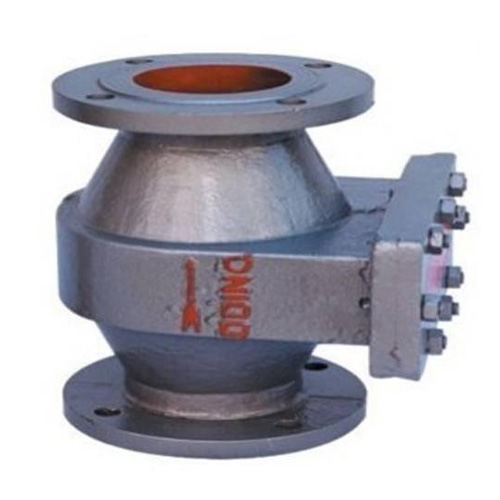Industrial safety is non-negotiable. Whether in oil & gas, petrochemical plants, refineries, power generation units, chemical manufacturing, or storage operations, overpressure remains one of the most dangerous risks. A single failure in pressure control equipment can trigger emergency shutdowns, environmental hazards, costly repairs, or even life-threatening accidents. This is why selecting the right safety valve manufacturer and safety valve supplier is essential for every facility.
Across the world, industries increasingly source from China — due to engineering advancements, strict safety standards, competitive pricing, and fast production capabilities. Among the leading names, Luofu Valve Group has earned a strong reputation for precision-engineered safety products used in high-risk industrial environments.
Why Chinese Safety Valve Suppliers Are Gaining Global Trust
China’s valve manufacturing sector has evolved dramatically in the past two decades. Today, a top-tier safety valve supplier in China offers:
-
Products engineered according to API, ASME, and national standards
-
Global export capability with documented compliance
-
Strict quality control, testing, and material traceability
-
Custom engineering for special industrial requirements
-
Competitive pricing backed by large-scale production
These advantages enable international EPC contractors, refineries, chemical plants, and processing industries to rely on safety valve China brands with confidence.
Comprehensive Valve Solutions for Industrial Safety
Luofu Valve Group offers a complete product range that covers almost every demand in pressure safety and process protection, including:
-
Safety Valves
-
Pressure Safety Valves (PSV)
-
Safety Relief Valves
-
Breather Valves
-
Pressure Reducing Valves
-
Regulating Valves
-
Switching Safety Valve and Change-Over Systems
This enables industrial buyers to source all pressure safety products from one reliable manufacturer — saving time and simplifying procurement.
Pressure Safety Valves — Essential for High-Risk Industrial Operations
A pressure safety valve manufacturer plays a critical role in protecting pipelines, boilers, reactors, tanks, compressors, and other pressurized systems. A quality pressure safety valve supplier ensures precise venting when system pressure exceeds safe limits, preventing system failure.
Many high-pressure industries now depend on a pressure safety valve manufacturer in China because of:
-
Long service life even in corrosive environments
-
High-temperature and high-pressure tolerance
-
Accurate and repeatable opening and reseating performance
-
Low maintenance requirements
-
Compatibility with gases, steam, and liquids
With proven performance, a pressure safety valve supplier in China guarantees reliable overpressure protection and lifecycle efficiency.
Safety Relief Valves — Final Barrier Against System Damage
A safety relief valve manufacturer provides the last defensive layer against sudden pressure spikes. These valves are mandatory in safety-critical zones such as:
-
Boilers and steam systems
-
Petrochemical and chemical plants
-
Fuel gas and hydrocarbon processing
-
Marine and offshore platforms
-
Heat exchange and power stations
A reputable safety relief valve supplier in China delivers precision-engineered valves that operate consistently under severe vibrations, thermal fluctuations, and harsh operating conditions. The durability and testing standards of modern safety relief valve manufacturers in China have made China a preferred source for long-term safety equipment supply.
Breather Valves — Specialized Protection for Storage Tanks
Storage tanks face constant internal pressure changes due to liquid movement, temperature variation, and filling cycles. A breather valve China solution prevents structural damage by controlling both vacuum and overpressure.
A leading breather valve manufacturer in China offers:
-
Weight-loaded breather valves
-
Spring-loaded breather valves
-
Flame-arrestor breather valves
-
Pilot-operated breather valves
-
Corrosion-resistant materials for chemical and fuel storage
Industries handling chemicals, hydrocarbons, and industrial liquids now frequently choose a breather valve supplier in China for reliable tank protection and long-service sustainability.
Switching and Change-Over Systems — Zero-Downtime Valve Protection
Many industries cannot stop production to inspect or replace a PSV. To maintain uninterrupted operation, facilities increasingly use:
-
Switching Safety Valve
-
Double Switching Safety Valve
-
PSV Switching Valve
-
Change-Over Valve / Change Over Valve China
-
Pressure Safety Valve Change Over System
Conclusion
Safety is the foundation of every industrial facility. With overpressure posing severe risks to equipment and personnel, investing in dependable safety technology is not optional — it is mandatory. Working with a leading safety valve manufacturer in China like Luofu Valve Group gives global industries access to engineering excellence, certified manufacturing, competitive pricing, and end-to-end product support.
Whether your requirement is a pressure safety valve, safety relief valve, breather valve, switching safety valve, or PSV change-over system, Luofu Valve Group offers a complete solution for safe and efficient operations.
📌 For inquiries, quotes, or technical consultation, contact:
sale@luofuvalve.com | +86-21-6978 3899













